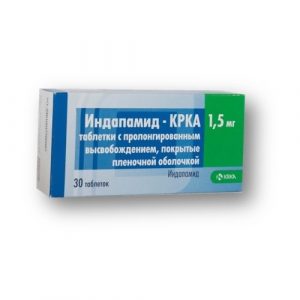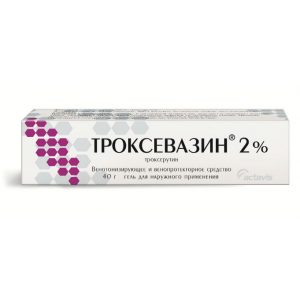Description
Latin name
CAPTOPRIL
Release form
Tablets.
packaging 40 pcs
Pharmacological action
Kanizon plus is a combined preparation that has anti-inflammatory, anti-allergic, antibacterial and antifungal (fungicidal) effects.
Gentamicin – a broad-spectrum antibiotic from the group of aminoglycosides, acts bactericidal. Highly sensitive gram-negative microorganisms – Proteus spp. (indole-positive and indolenegative), Escherichia coli, Klebsiella spp .. Salmonella spp., Shigella spp., Campylobacter spp .. Staphylococcus spp. (methicillin-resistant).
Sensitive: Enterococcus faecalis, Serratia spp., Pseudomonas spp., Acinetobacter spp., Citrobacter spp.
Resistant: Neisseria meningitidis, Treponema pallidum, anaerobic microbes: Streptococcus spp. (except Streptococcus pneumoniae), Enterococcus faecalis Providencia rettgeri.
Betamethasone is a glucocorticosteroid that has a local anti-inflammatory, vasoconstrictive, anti-allergic effect.
Clotrimazole is an antifungal agent from the group of imidazole derivatives for topical use. It has an effect due to a violation of the synthesis of ergosterol, which is an integral part of the cell membrane of fungi. It has a wide spectrum of action. Effective against dermatophytes, molds, fungi of the genus Candida, Malassezia which is an integral part of the cell membrane of fungi. It has a wide spectrum of action. Effective against dermatophytes, molds, fungi of the genus Candida, Malassezia which is an integral part of the cell membrane of fungi. It has a wide spectrum of action. Effective against dermatophytes, molds, fungi of the genus Candida, Malasseziahas an effect on the kinin-kallikrein system, preventing the breakdown of bradykinin.
Due to its vasodilating effect, it reduces total peripheral vascular resistance (afterload), wedging pressure in
pulmonary capillaries (preload), and resistance in pulmonary vessels increases cardiac output and exercise tolerance. With prolonged use, it reduces the severity of left ventricular myocardial hypertrophy, prevents the progression of heart failure and slows down the development of left ventricular dilatation.
Reduces the tone of the efferent arterioles of the glomeruli of the kidneys, thereby improving intracubular hemodynamics, and prevents the development of diabetic nephropathy.
Indications
Arterial hypertension (including renovascular), chronic heart failure (as part of combination therapy), dysfunction of the left ventricle after myocardial infarction in patients in a clinically stable condition. Diabetic nephropathy with insulin-dependent diabetes mellitus.
Contraindications
Captopril is contraindicated in patients with hypersensitivity to this drug or to other angiotensin-converting enzyme inhibitors (patients who have developed angionephrotic edema when treated with another ACE inhibitor), gastrointestinal tract disorder, immunological diseases, pregnancy, feeding.
Special instructions
Do not use simultaneously with potassium-sparing diuretics and other drugs that increase the concentration of potassium in the blood (due to the risk of hyperkalemia).
Composition
1 tablet contains 25 mg of captopril.
Dosage and administration
The initial dose of Captopril is 6.25 mg or 12.5 mg 3 times a day, if necessary, increase the dose to 25 mg 3 times a day. The maximum daily dose is 150 mg.
Adults: 25 mg three times a day, subsequently, depending on tolerance, gradually increase to 100 mg three times a day. The standard dosage is 50-100 mg three times a day, and the maximum daily dose is 450 mg. In heart failure, it is prescribed together with diuretics and / or in combination with digitalis preparations (in order to avoid an initial excessive decrease in blood pressure, the diuretic is canceled or the dose reduced before captopril is prescribed).
For children: 0.15 mg / kg / day in three or four doses.
Side effects
From the cardiovascular system and blood (hematopoiesis, hemostasis): orthostatic hypotension, tachycardia, neutropenia, agranulocytosis.
From the digestive tract: nausea, anorexia, taste disturbance, dry mouth.
From the side of metabolism: electrolyte imbalance (especially in patients with renal failure), hyponatremia (with the simultaneous use of diuretics).
Allergic reactions: skin rash, itching, erythema, urticaria, photosensitivity, vasomotor edema.
Other: dry cough.
Drug interactions
The antihypertensive effect is weakened by indomethacin and other NSAIDs, including selective COX-2 inhibitors (delayed Na + and decreased Pg synthesis), especially against the background of low renin concentration, and estrogens (delayed Na +).
Combination with thiazide diuretics, vasodilators (minoxidil), enhances the hypotensive effect.
Combined use with potassium-sparing diuretics, K + preparations, potassium supplements, salt substitutes (contain significant amounts of K +) increases the risk of hyperkalemia.
Slows down the excretion of Li + drugs, increasing its concentration in the blood.
With the administration of captopril while taking allopurinol or procainamide, the risk of developing Stevens-Johnson syndrome and neutropenia increases.
With the simultaneous use of ACE inhibitors and gold preparations (sodium aurothiomalate), a symptom complex has been described, including facial flushing, nausea, vomiting, and a decrease in blood pressure.
Insulin and other oral hypoglycemic drugs – the risk of hypoglycemia.
The use of captopril in patients receiving immunosuppressants (including azathioprine or cyclophosphamide) increases the risk of hematologic disorders.
Overdose
Symptoms: marked decrease in blood pressure.
Treatment: to put the patient with the raised lower extremities measures aimed at restoration of blood pressure (increase in BCC, including in / in infusion of 0.9% NaCl solution), symptomatic therapy. In adults, peritoneal dialysis may be ineffective with hemodialysis.
Storage Conditions
In a dry, dark place at a temperature not exceeding 25 ° C.
lekarstvennaja tablet form



